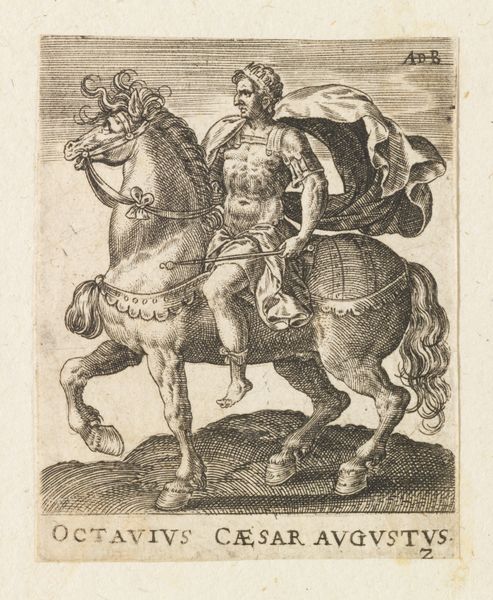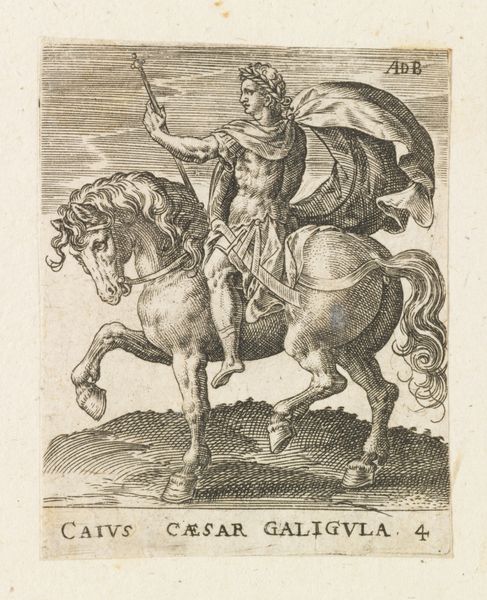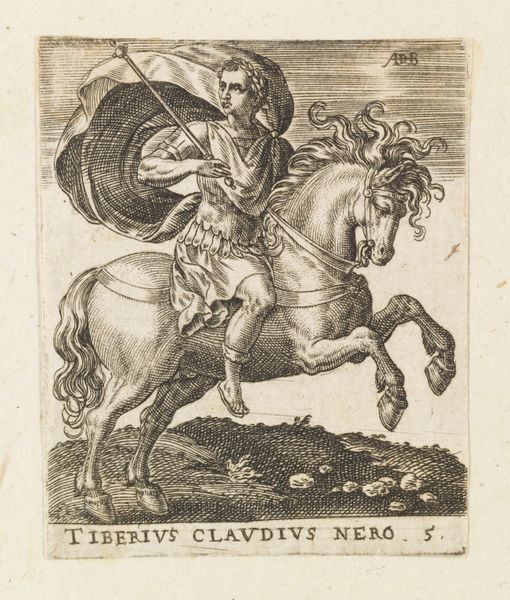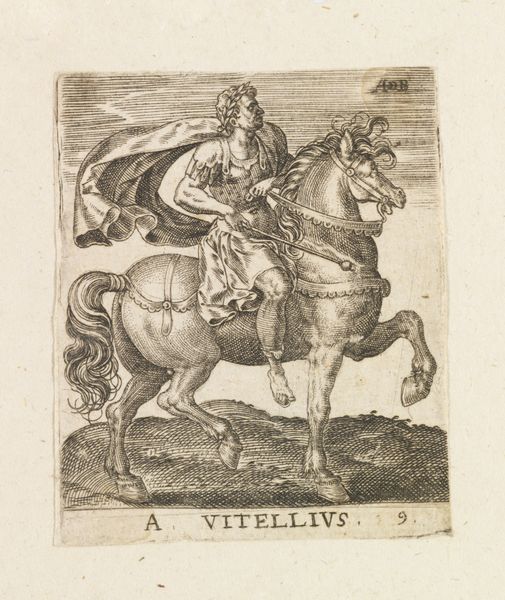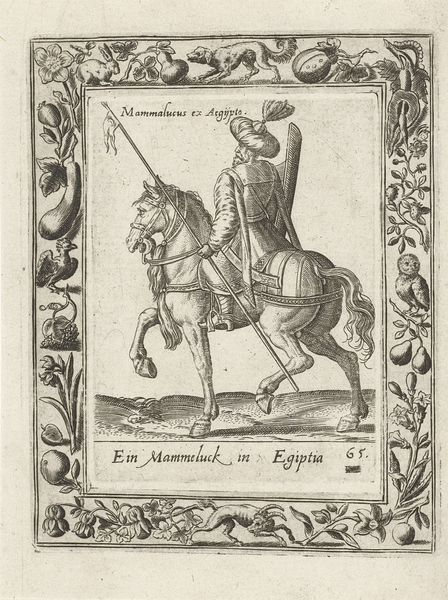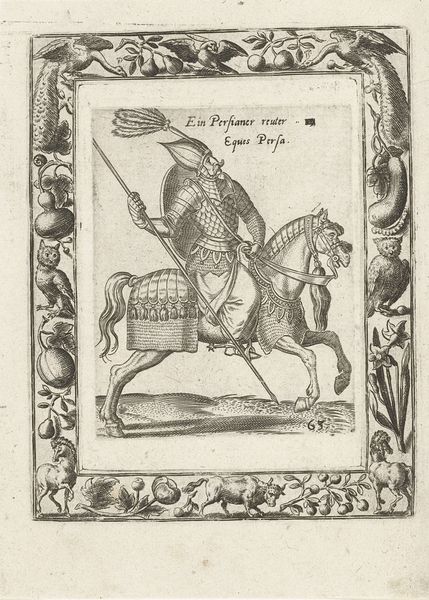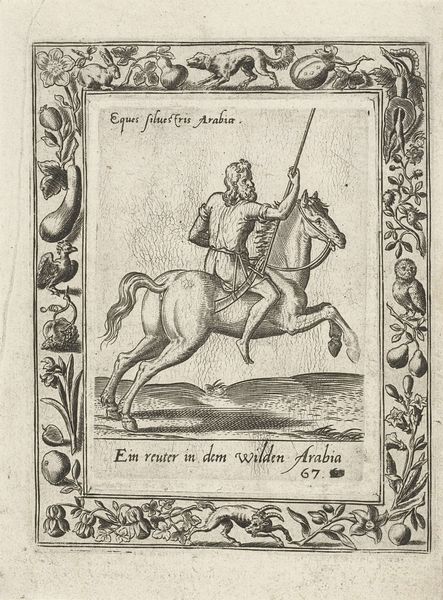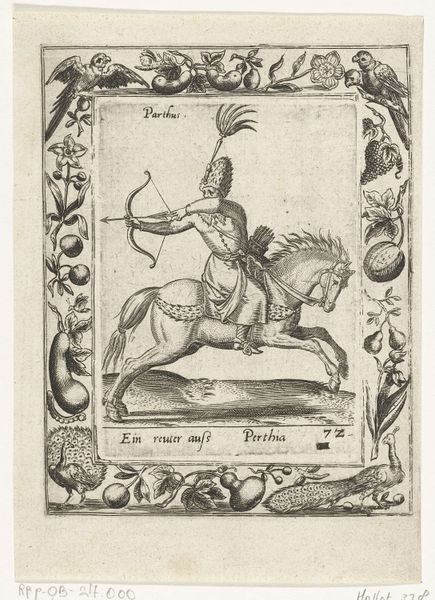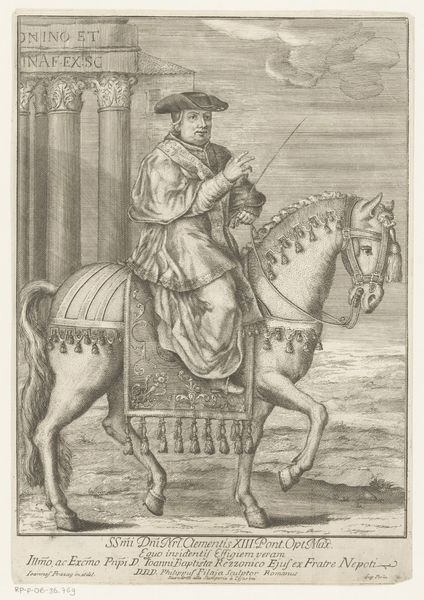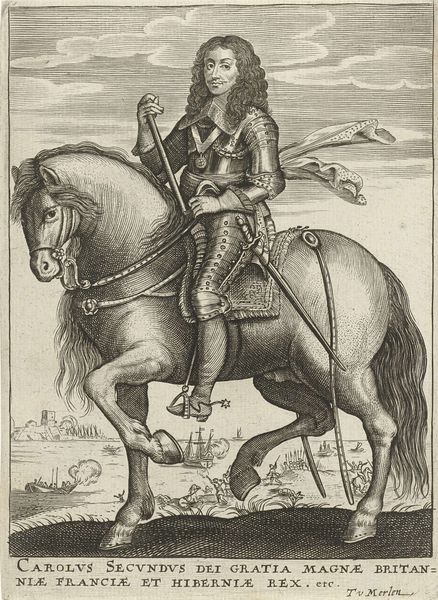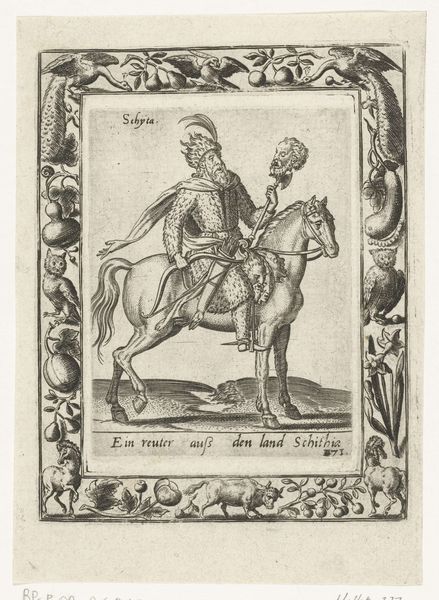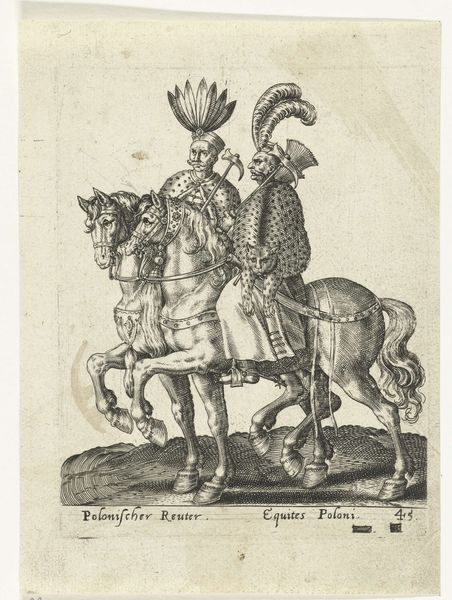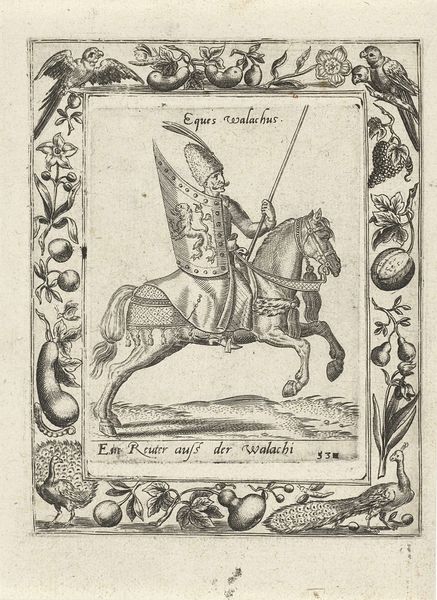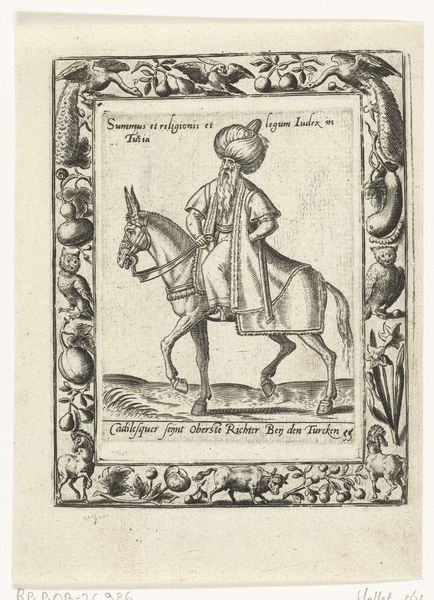
C. Julius Caesar, from "Twelve Caesars on Horseback" 1560 - 1592
0:00
0:00
drawing, print, engraving
#
portrait
#
drawing
# print
#
classical-realism
#
horse
#
history-painting
#
engraving
Dimensions: Sheet: 2 5/16 × 1 13/16 in. (5.8 × 4.6 cm)
Copyright: Public Domain
This is Abraham de Bruyn’s engraving, C. Julius Caesar, made sometime in the late 16th century as part of a series called "Twelve Caesars on Horseback". De Bruyn was working in a period marked by the rise of printmaking as a powerful tool for disseminating knowledge and propaganda. This series reflects a fascination with classical history, filtered through the lens of 16th-century European power structures. The image presents Caesar as a triumphant, virile leader, embodying power and authority. Seated high on a rearing horse, he is literally elevated above us. This positioning reinforces traditional ideals of masculinity and leadership, and it is important to consider how these depictions contribute to the construction of historical narratives. The choice to portray Caesar on horseback is no accident; it speaks to the power, wealth, and dominance associated with the equestrian class. De Bruyn isn't just showing us a historical figure; he's crafting an image designed to resonate with contemporary audiences, reinforcing existing social hierarchies and celebrating the idea of strong, centralized rule. How do these historical representations continue to inform our understanding of power today?
Comments
No comments
Be the first to comment and join the conversation on the ultimate creative platform.
